5 Types of Vinyl Flooring – Compared
When you need durability and versatility in your flooring option, vinyl flooring is your pick.
There are different types of vinyl flooring. It is easy to install and maintain at home. Besides its hardwood-like appearance enhances the theme of your house.
You can choose one of its various types to mimic the visuals of premium flooring types. The types range from sheets and planks to LVT and self-adhesive tiles. These expensive-looking vinyl floorings are the most reasonable options for your home.
Here are the different types of vinyl flooring to uplift the mood of your home.
1. An impression of real wood: Vinyl Sheet Flooring
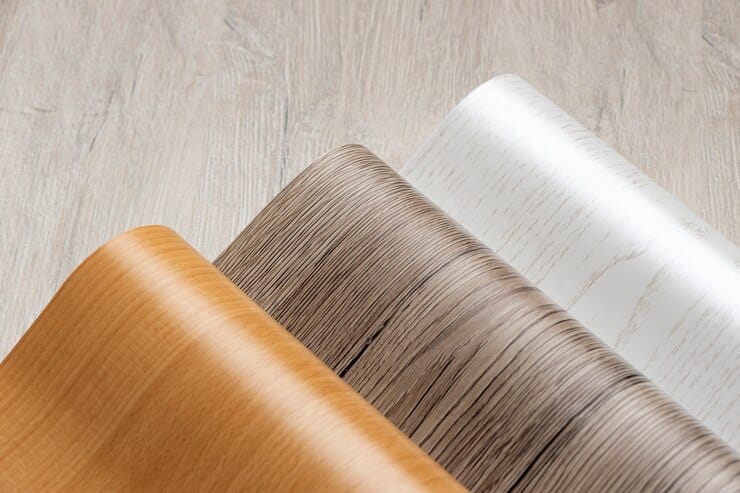
Vinyl sheet flooring imitates the look of hardwood, stone flooring, and ceramic tiles, offering an exclusive subtle glimpse.
The vinyl sheet comes in a continuous roll of sheet. You can get it either in standard size or can be cut in the chosen length according to your room. Luckily, once you choose the right size, vinyl sheets can cover the whole room with one piece.
You can lay these sheets in any part of your home. But when you decide to put vinyl sheets in the bathroom, kitchen, or laundry areas, these water-resistant vinyls work the best. The PVC in vinyl sheets is moistureproof so it works better.
Besides, you can clean the spill or scum on the vinyl floor with a cloth or broom. They are easy to maintain. Also, it comes in various designs including chequerboard, brick, and parquet.
Installing vinyl sheets brings an attractive result and is great for underfloor heating. Remember that if your room is larger, you might need 2 or 3 stripes, and lay it with extra care.
Make your hallways luxurious with Luxury Vinyl Tiles (LVT)
Same as its sister type: vinyl flooring sheets, Luxury vinyl tiles also mimics marble or hardwood floors. These are easy to install in three different types i.e.: self-adhesive vinyl tiles, and glue-down vinyl tiles.
2. Self-Adhesive Vinyl Tiles: An easy-to-install
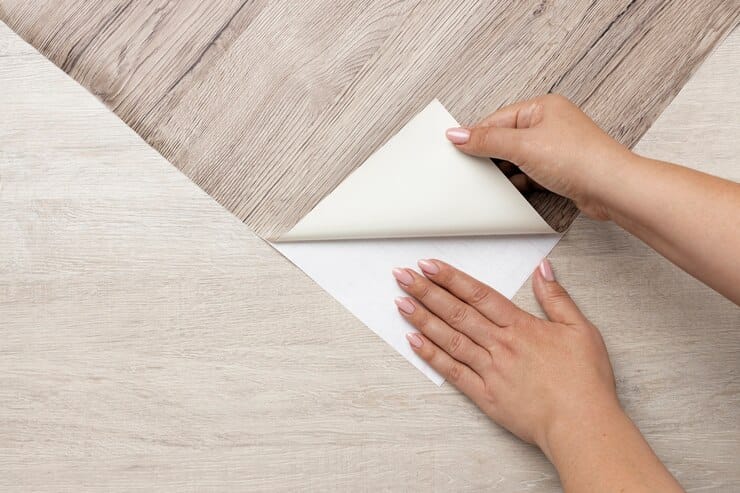
First of all, self-adhesive vinyl tiles which have multiple layers. It mainly contains a design layer and a top layer for protection. It eliminates the need for a separate adhesive application as it already comes with a pre-applied adhesive backing.
Installing these vinyl tiles is much easier with a simple peel-and-stick method. Although the installation process is quick and easy, the result can vary depending on the adhesive quality of the tiles.
Also, the subfloor preparation is important, any flaws can lead to a negative result. Ensure that you use blinds or curtains as direct sunlight can reduce the adhesive of the tiles. Moreover, for maintenance, simply use mopping or sweeping with a normal cleaner to keep the tiles in good condition.
3. Glue-Down Vinyl Tiles
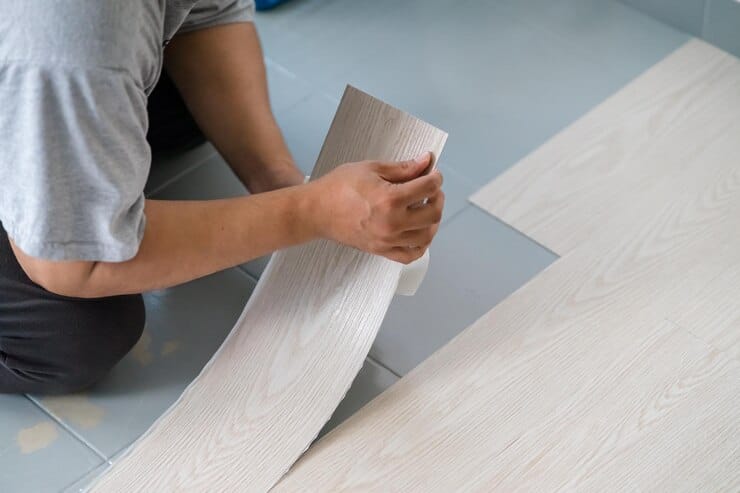
Glue-down vinyl tiles are similar to other tiles, in comparison to multiple layers for aesthetic appearance and durability.
These tiles require an adhesive before installation for manually applied to the subfloor or the back of the tile.
The glue-down vinyl tiles are popular for their stability. By reducing the gaps and seam openings, these tiles make a closer bond to the subfloor. Once these tiles are perfectly installed, it’s hard to move them to another location which makes it an ideal choice for heavy foot traffic areas.
When it comes to maintaining these tiles, the same method will apply to other vinyl tiles. Simple use sweeping or damp mopping without excessive use of water.
4. Interlock your floors with Click Vinyl Planks
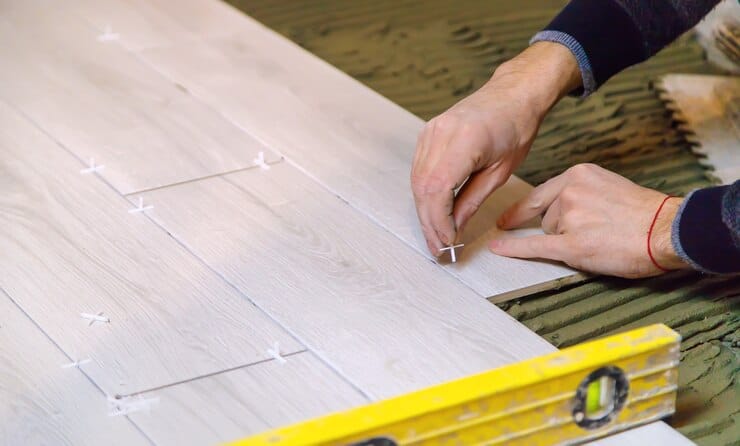
Click vinyl planks have an interlocking design, including layers such as SPC vinyl core, top protective layers, and decorative layers.
These planks are installed to reproduce the wooden floorboards. The click system of these planks offers an easy installation process.
When you place these planks on the floor, it interlocks the edges. Also, they can wear off easily and aren’t friendly for foot traffic.
To keep the click vinyl planks clean, sweeping will be a great choice. Although, you can also do some mopping with a mild cleaner, ensuring that water does not leak into the seams of the planks.
5. Loose-Lay Vinyl Planks
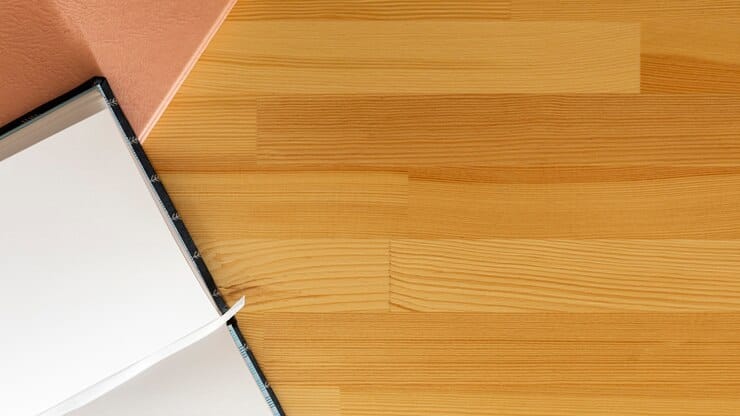
Loose-lay vinyl planks are unique in their installation method. It does not include glue, click, or adhesive system. These planks are designed to sit flat on the subfloor and kept in place by their weight.
Like other vinyl types, loose-lay planks also contain multiple layers, including decorative and protective layers. A great advantage of these planks is that you can quickly and easily install them and even replace them without facing any damage or hassle.
Keep in mind that under heavy furniture and large areas, you might need adhesive to avoid any movement between the planks.
Types of Vinyl Flooring Compared
| Types | Layers | Installation | Water Resistance | Repairing | Maintenance |
| Vinyl Sheet Flooring | Mostly 5 | Moderate (detailed cutting) | High | Difficult (large sections) | Sweep & Mop |
| Self-Adhesive Vinyl Tiles | Multiple | Very easy | Moderate | Easy (tile by tile) | Sweep, mild mop & sun protection |
| Glue-Down Vinyl Tiles | Multiple | Time-consuming | High | Moderate | Sweep & damp mop |
| Click Vinyl Planks | Multiple | Easy | Moderate | Very easy (plank by plank) | Sweep, damp mop & avoid water seep |
| Loose-Lay Vinyl Planks | Multiple | Very easy | Moderate | Very easy (plank by plank) | Sweep & mop |
LVT vs Vinyl: What is Best for You?
LVT and vinyl both are great flooring options, providing numerous benefits. However, there are a few differences that everyone should know to make the right choice for their homes.
Vinyl is made with a thin layer, designed with different patterns which is then covered with a protective layer on the top. Luxury Vinyl Tiles (LVT) is built with a new adaptation of vinyl that can be installed as both tiles and planks like laminate flooring.
Here are the three main factors that highlight the difference between LVT and vinyl flooring:
- Cost
- Durability
- Installation
When we compare the cost, vinyl is about £10-£50 per square meter, depending on the style you choose. While, on the other hand, LVT costs £20-£45 per square meter. However, you can make weekly payments on the flooring with zero interest and easy installments.
The durability of LVT is much higher than vinyl because vinyl is made with a thin layer and has the chance of getting damaged easily. Whereas, LVT consists of thick layers that make them last for about 20-25 years.
When it comes to the installation process, vinyl is easier to install compared to LVT. You can install vinyl tiles by yourself too. But, that’s not the case with LVT as it uses a click-laying system which makes the installation a bit complicated.
Final Thoughts
As a conclusion, choosing the right flooring affects the whole space, including the aesthetic, value, and comfort. Vinyl flooring benefits in different ways while boosting the state of your floor.
While picking the vinyl flooring, it is important to understand the types of vinyl as well. By exploring the different types, you can decide whether to use tiles or planks for your home.

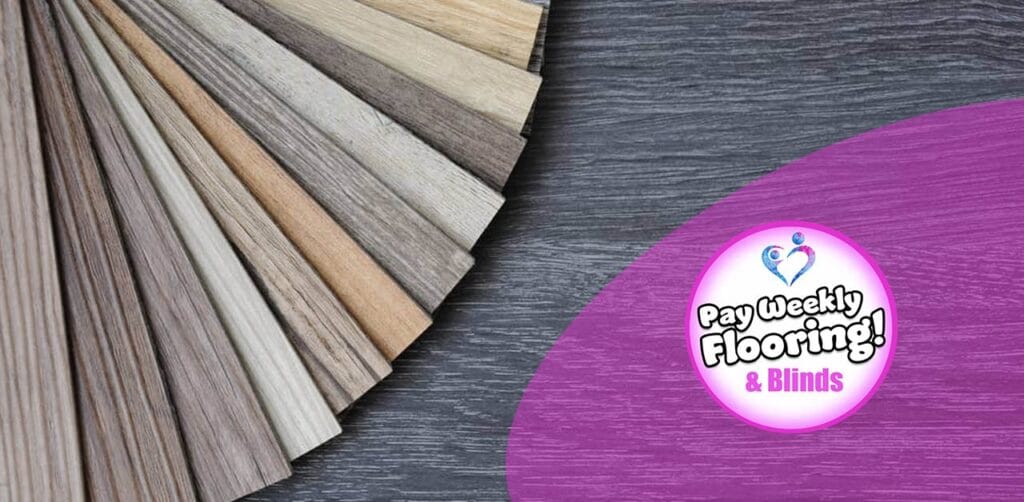
Muchas gracias. ?Como puedo iniciar sesion?